The six month wait is over! I received notice my Flex Radio TGXL-SO2R has shipped. This completes my Flex 6700 > PGXL > TGXL setup.
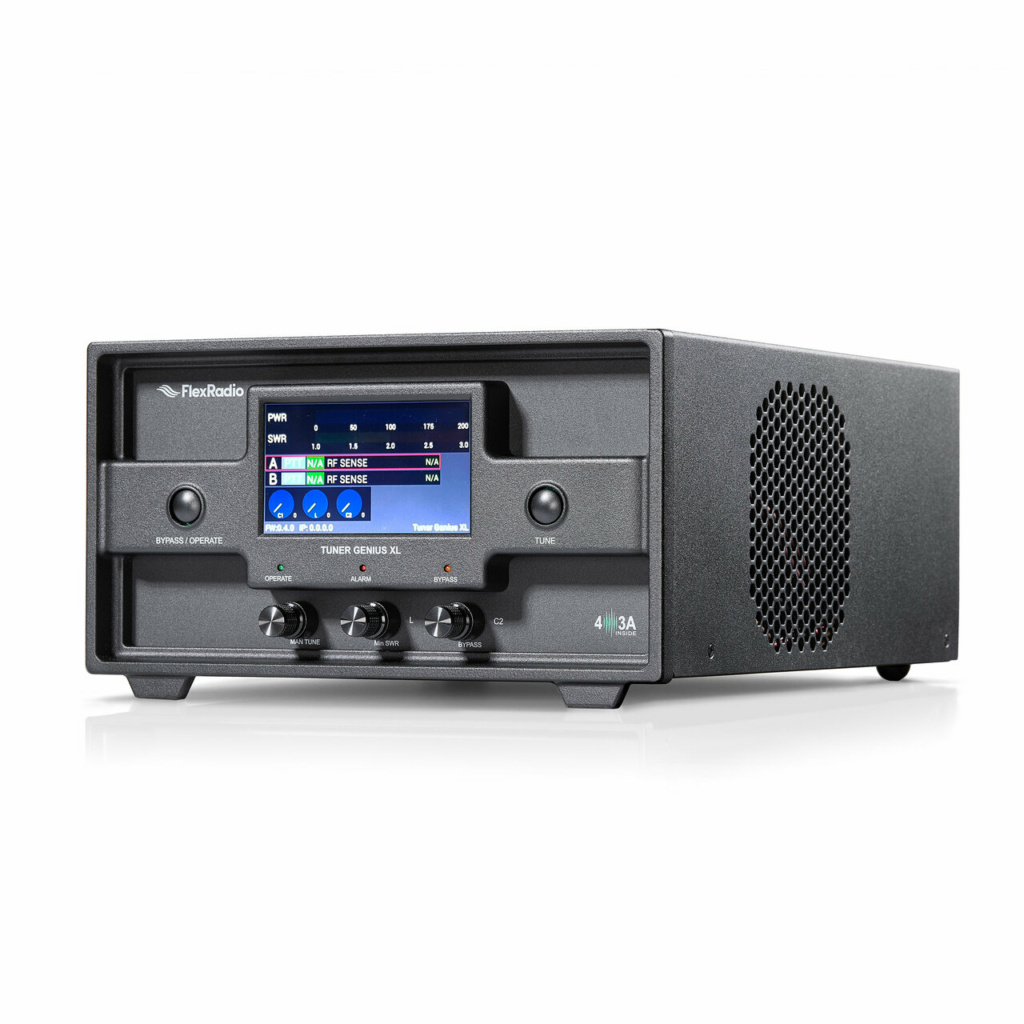
World SSTV Cams
What’s New
These web pages describe my station’s construction and operation. They also include some personal reviews, recommendations, and links to relevant information. I try to offer some insight into the research and planning stages of the station build.
Check back for updates to what’s going on here in the shack. I’m always building or improving something related to Amateur Radio, and I’ll post my findings here, in the event others may be interested.
The six month wait is over! I received notice my Flex Radio TGXL-SO2R has shipped. This completes my Flex 6700 > PGXL > TGXL setup.

I received an email on Tuesday advising me that 20,000 5G Helium Hotspots would be available via a pre-sale waiting list. The link brought me to the FreedomFi website. A countdown clock showed there was 2 hours left before the list would open. So I decided to purchase the FreedomFi 5G Helium Hotspot.
I waited out the two hours, and of course, the website was immediately inundated with people trying to order. I tried for a while, but eventually realized the website was crashed. So I gave up, thoroughly disappointed.
I went about my day, returning home about 4 hours later. Doubting there would be any units left, I went to the site to check, and lo and behold, I got in!
I made payment, it was accepted, and I am on my way to 5G. My confirmation email stated that since I am also on the RAK v2 Miner waitlist, my order for both units will be prioritized for expedited delivery! Hot stuff!
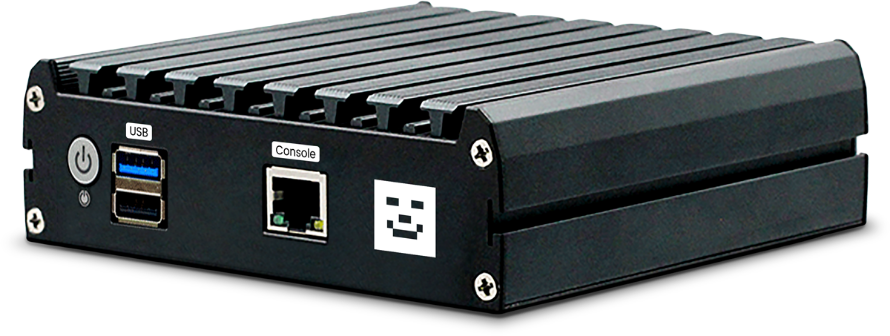
I received an email from FreedomFi today with a link to finalize my 5G Cellular Hotspot purchase. It’s a done deal. They say I can expect delivery in 14 days. I chose the Indoor CBRS Small Cell package.

FreedomFi Gateway is the first omni-protocol miner for the Helium network. It will mine HNT for providing LoRa coverage. It is also expandable with certified CBRS small cells (and later Wi-Fi access points) to earn HNT cryptocurrency by offloading cellular data for carriers like DISH Wireless and GigSky.
Evolved Packet Core (EPC) is a framework for providing converged voice and data on a 4G Long-Term Evolution (LTE) network. … This allows operators to deploy and operate one packet network for 2G, 3G, WLAN, WiMax, LTE and fixed access (Ethernet, DSL, cable and fiber).
https://magma.github.io/magma/docs/basics/introduction.html
HIDDEN GREEN MOLE
https://explorer.helium.com/hotspots/112KAet3S2bdcFvBYByd4yJG9dBC2oRk8pY29r4e2g9Ts11t9ccQ
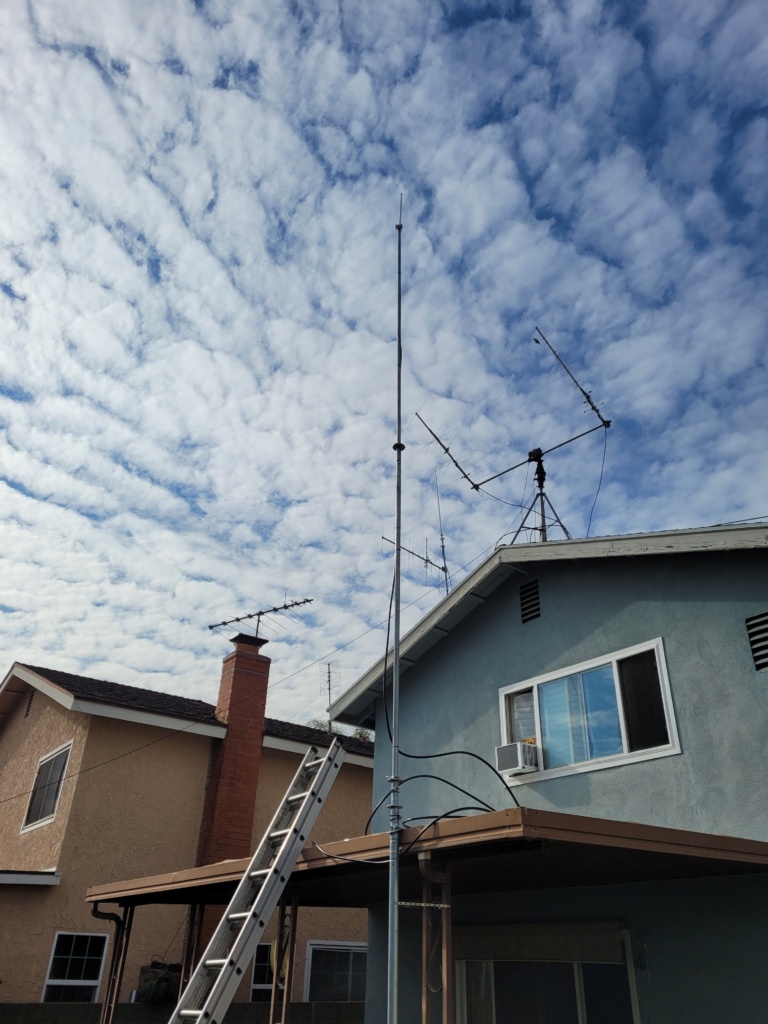
The LoRa antenna is not yet at it’s full height. I plan to nest each section 1-2ft for added stability. When complete, it will extend approximately 44 ft. As can be seen in the screenshot below, the RF coverage looks promising at 30ft. (currently 95 witnesses) Once at its final height, RF coverage will expand even further as I overcome the tree line attenuation I am currently experiencing.
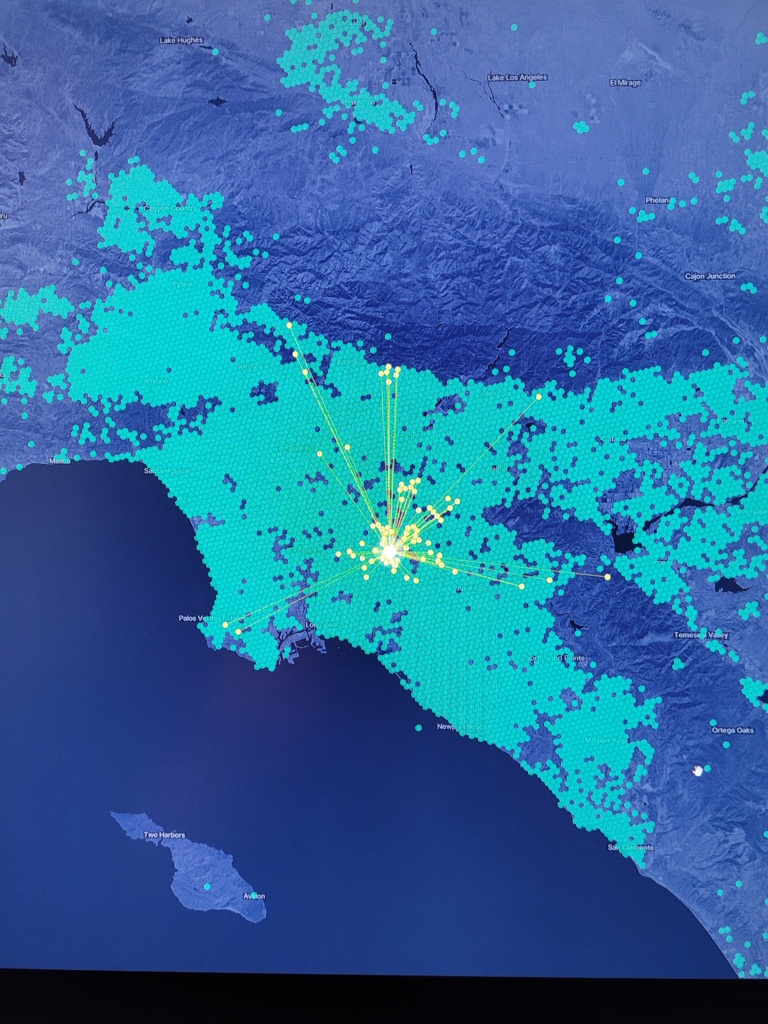
I received another email from the folks at Cal-Chip Connect asking if I would be willing to accept a substitute miner in place of the RAK v2 I had on backorder. When they offered this option several months ago, I passed on it. But not this time!
Today I received the Kerlink HotSpot Miner. Just a few days after signing the swap agreement.
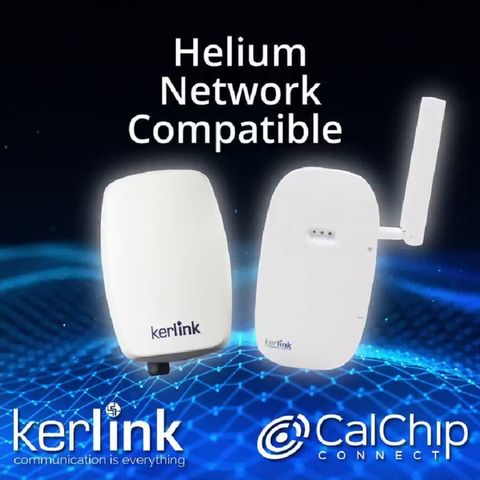
I have a location for the new miner (my second) in Lancaster CA where the hex only has 1 other hotspot. This is interesting, as I can expect a much higher Transmit Scale than I have on my miner here in the shack.
My ‘home’ hex now has 5 miners in it, and the miner only has a .32 transmit scale. I anticipate an improved transmit scale once I’m up and running in Lancaster.
The MNTD GoldSpot Helium miner has arrived!
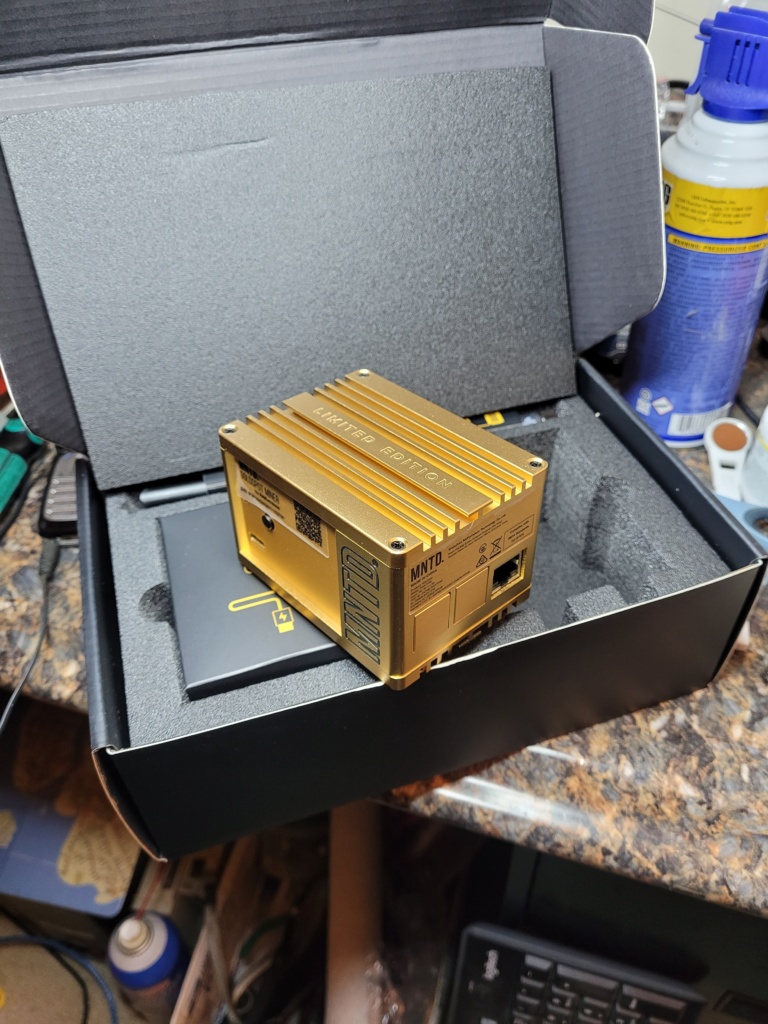
The miner has been in place and running for a few weeks now. I knew it was in a bad spot at the time I installed it, but I was simply out of time on that visit. On my next trip to the miners location, I plan to reposition it near a window.
I expect the TX Scale to improve once I move the miner next to a window. The miner is currently reporting ZERO witnesses. (not good). Furthermore, the miner shows up as “Relayed” in the Helium app. This despite the fact that I entered a port forwarding rule in the subject router. My experience with the last miner installation (in Lancaster) was it took 3 weeks for the port forward correction to propagate through the network. I’m coming up on the 3 week mark with the relayed miner, so I expect a change in relay status soon.
The line mixer I use in the shack to combine audio from the PC and the transceivers, has developed a nasty 60 cycle hum. It’s time for an SM10 Power Supply Board Swap.
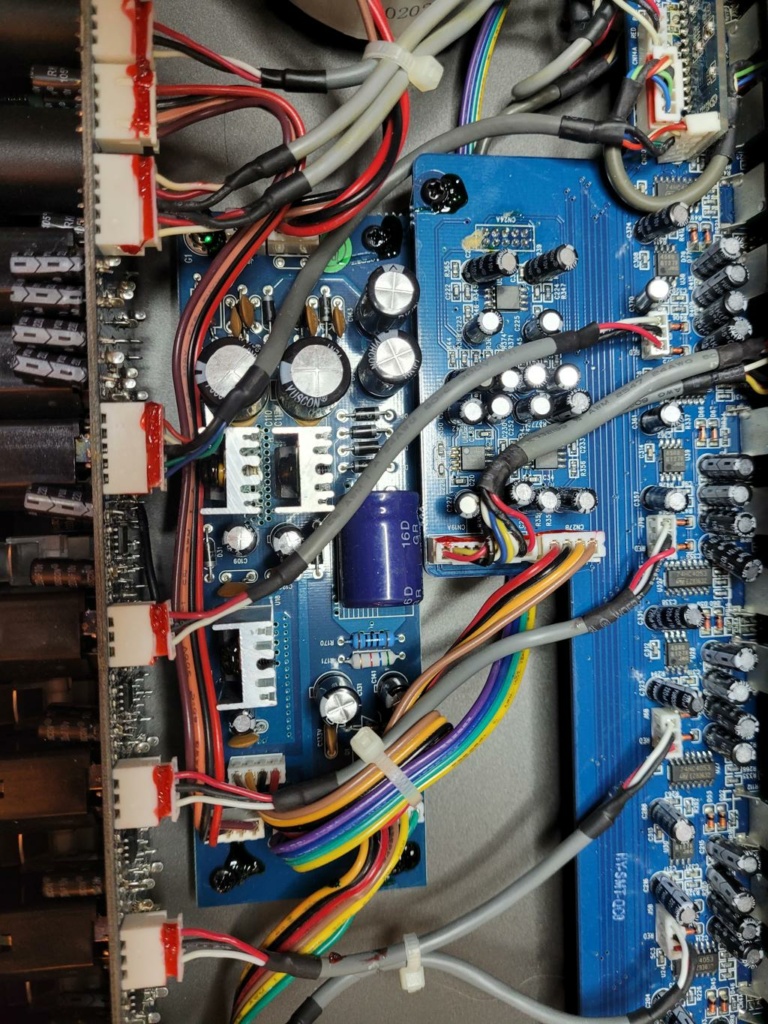
This is the suspect board. Can you see the problem already?
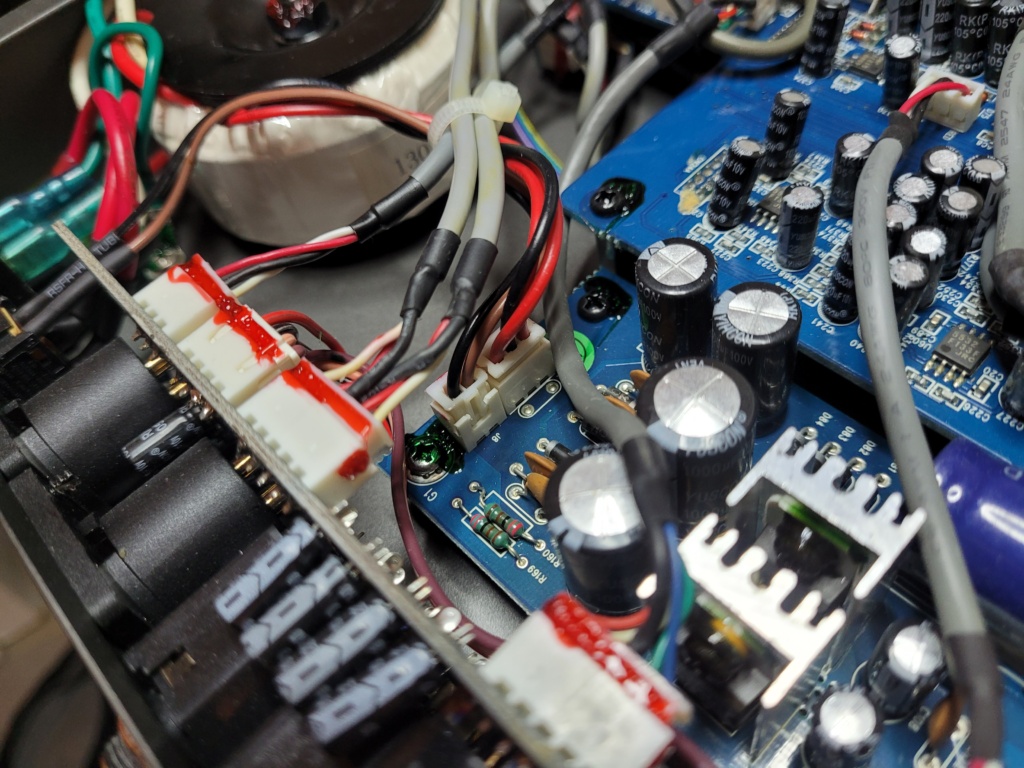
The problem is a bit easier to see from this angle. Do you see it yet?
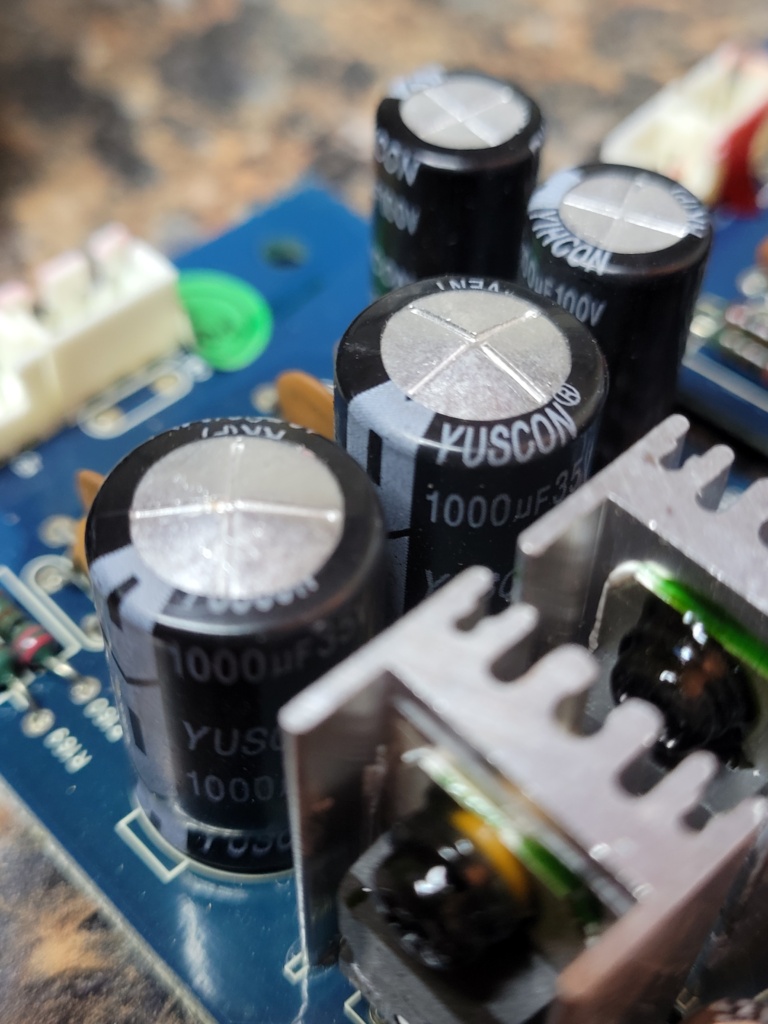
There you have it. Those filter caps are bulging big time! These failed capacitors are the reason we have developed the annoying hum.
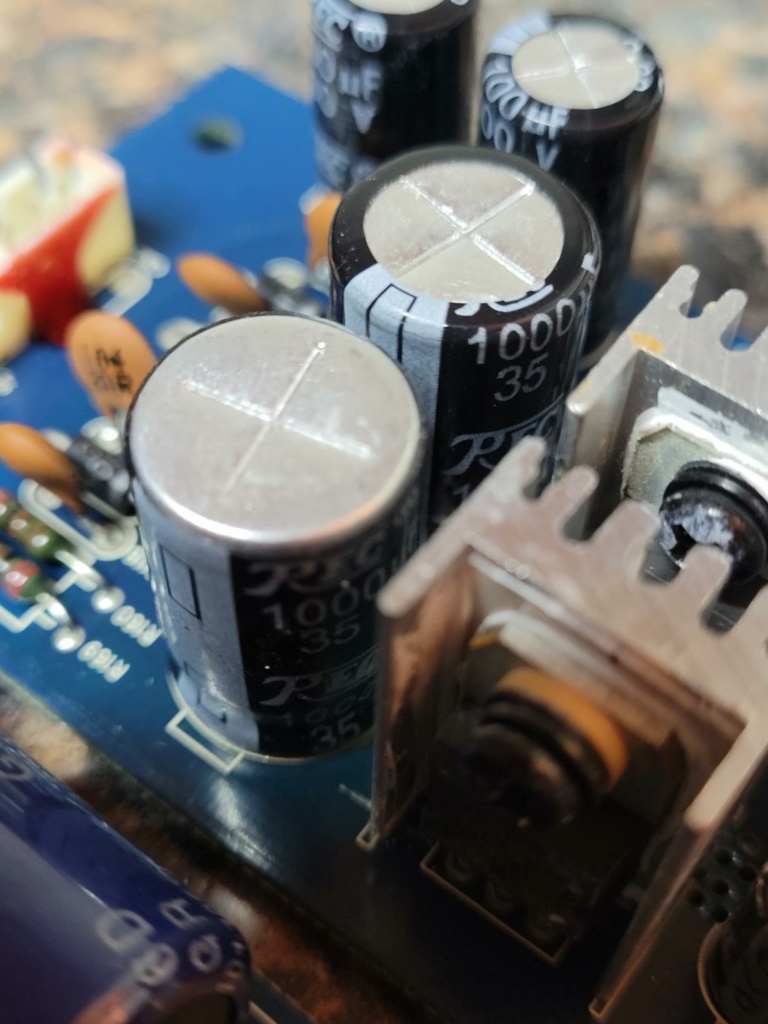
Here are the same two caps on the replacement board. Notice how the tops are nice and flat! The vents are not open or stressed.
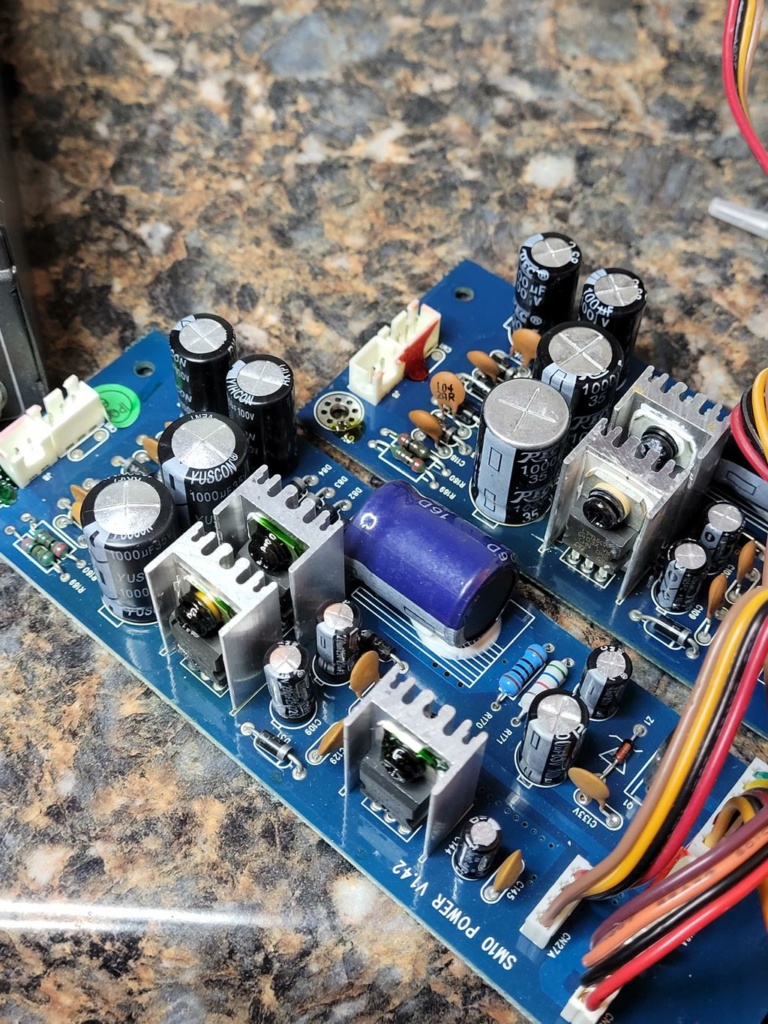
Side by side comparison.
The SM10 power supply board swap did the trick!
I will order (2) 1000uf 35v and (2) 220uf 25v replacement caps, and partially recap the original board for use later on when the replacement fails!
The SM10 features ten channels with 1/4″ stereo line inputs and a balance control for each channel. Two channels include XLR mic inputs. This allows you to blend the relative levels of stereo inputs to your liking. In addition, each channel includes a switch for +4 dBu or -10 dBV line level input.
For output, the SM10 provides electronically balanced main stereo XLR and 1/4″ line outputs. The SM10 provides versatile signal routing via Main Mix, Mix B, Monitor and EFX bus outputs, as well as low noise and discrete microphone pre-amplifiers with 48-volt phantom power.
Two auxiliary sends can also be used to route signals to external effects, or create a separate mix for on-stage monitors. The SM10 features front panel headphone and monitor outputs with dedicated level controls. The mix may be audited with the SM10’s 6-segment LED meter and a flexible meter/headphone source control.
The latest addition to my 5G CBRS Small Cell site is the MultiConnect® CBRS Wi-Fi AP. My neighbors will soon have the opportunity to utilize FREE WIFI via the Helium Network. This WiFi Access Point can accommodate up to 16 clients.
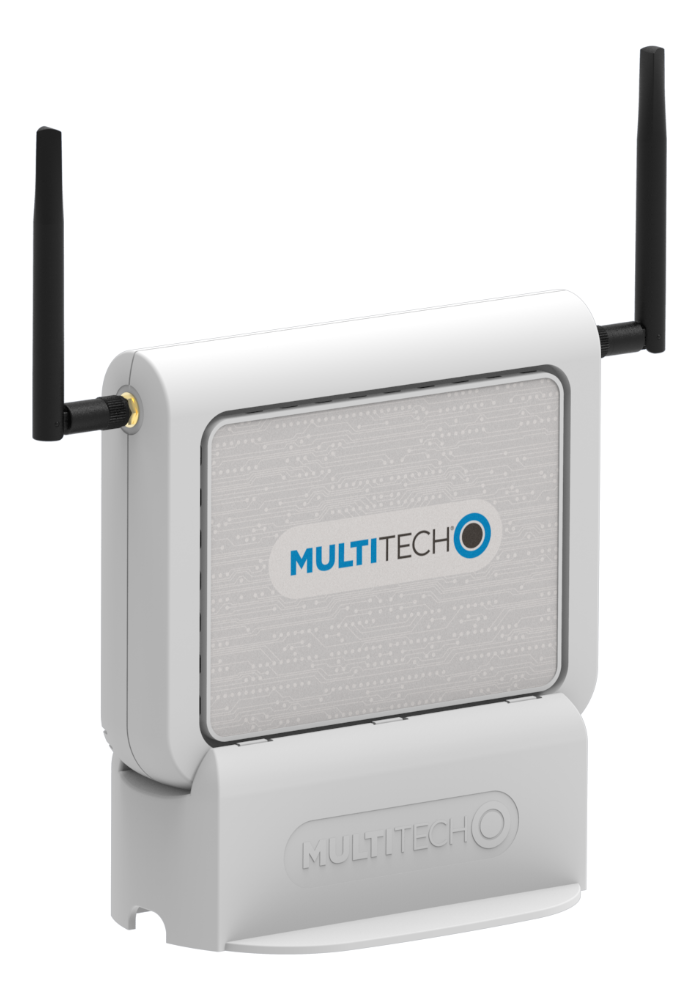
MultiConnect® CBRS WiFi Access Point for 5G CBRS Cellular Networks.
BENEFITS
Simple, flexible installation options
The AP can be set up to enable ‘one-to-many’ connectivity for families using more than one device. This access point can also be deployed in multi-dwelling buildings for users of smart devices.
The MultiConnect CBRS Wi-Fi access point (for use on CBRS cellular networks) provides secure, reliable, high-performance LTE-based Wi-Fi broadband coverage.
This newest addition to the award-winning MultiTech portfolio of FCC-authorized CBRS solutions can be remotely provisioned and managed at scale using an auto configuration server (ACS) or DeviceHQ®, a tool set featuring secure configuration, over-the-air updates, operational performance metrics and CBRS connection management.
Hats off to the folks at the MultiTech Help Desk!
I contacted them on the 4th of July, and they responded on the same day with a working solution! The fix was as simple as typing in a short command line. The internet connection has now been established for the 5G CBRS Wi-Fi AP. I have decided to open it up the neighbors: “Wilder_WiFi PW: Free4All”
Now for a pair of outdoor WiFi antennas, and we’ll be stylin’
Powered by The Peoples Network
I was delighted to see the Helium 5G Genesis period begin. The so-called Cellular Summer is underway. On Sunday August 15, 2022 I discovered there were three $MOBILE rewards posted to my Helium Wallet. To date, I have received 6 reward payments totaling 167,618.85 in Helium $MOBILE 5G Rewards.
That’s what we’d all like to know. The truth is it currently has no value assigned to it. My understanding is that the Helium Community must first vote and approve measures that will determine what the $MOBILE reward token will be worth. We do know that the $MOBILE tokens will be convertible to $HNT at a later date. Good enough for me.
08/12/22 30,460.60, 08/13/22 29,424.15, 08/14/22 28093.95, 08/15/22 27528.04, 08/16/22 26,504.62, 08/17/22 25,607.49
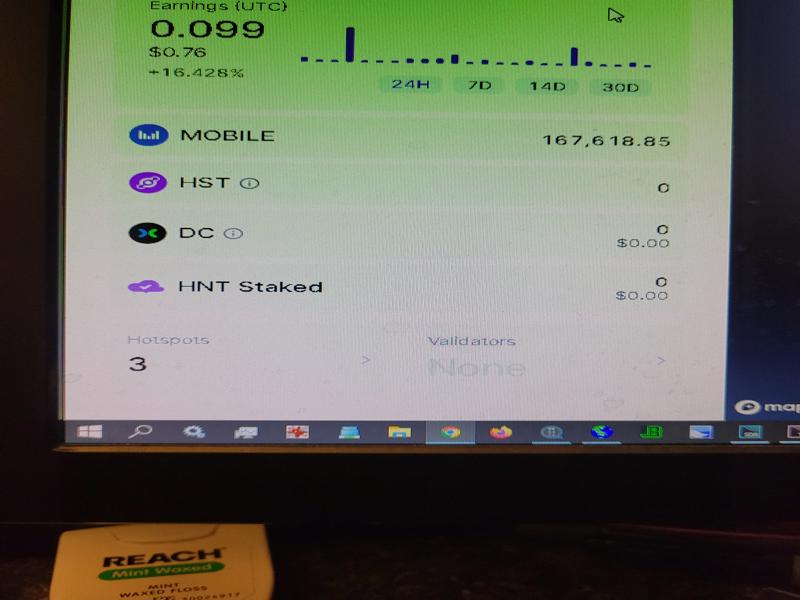
The Helium Blockchain rewards 5G Hotspots for providing 5G wireless coverage and verifying the Helium Network. 5G Hotspots are rewarded in the Helium MOBILE Token.
During the Genesis Period, 5G Hotspots will begin to earn MOBILE by reporting their status via a “heartbeat”, an automatic process of reporting to the Helium Blockchain that the Small Cell Radio is online and registered with the SAS.
Genesis is the period during which Hotspot owners will be rewarded for providing 5G coverage with pre-mined MOBILE tokens. MOBILE tokens will be redeemable for HNT after the Genesis period ends.
Once a 5G Hotspot is completely deployed, you as the owner are not required to do anything else to earn MOBILE. Your 5G Hotspot will perform all of its activities on its own and will be rewarded for maintaining a valid connection to the SAS.
There will be a max supply of 250B (billion) MOBILE with issuance halvenings of every 2 years aligned with the HNT issuance halvenings. The first halving will occur on August 1, 2023, to align with HNT halving and will continue on a 2-year cycle afterward. This creates a “stub period” as defined by HIP 53: Mobile subDAO which will begin when normal emissions of MOBILE tokens begin (and MOBILE can be redeemed by HNT in the subDAO’s treasury). The date for this is currently TBD and dependent on core developers implementing the HNT token treasury and redemption transactions on the Helium Blockchain. This is defined as Phase 2 of HIP 51: Helium DAO for all new subDAOs.
Before normal emissions of MOBILE begin, HIP 51: Helium DAO defined an earlier launch of MOBILE tokens assigning a premine amount of MOBILE to the Helium Foundation. The Helium Foundation will work with the core developers to begin the Genesis period of MOBILE rewards. Genesis rewards will be paid out of the Foundation’s pre-mined MOBILE rewards pool. Read more about the pre-mine distribution here.
Currently, the Helium Foundation intends to issue 100M (million) tokens per day in the Genesis period, and it will be proportionally distributed to all active 5G Small Cell Radios as described below.
All properly installed and registered 5G Hotspots will earn rewards for participating on the Network. A rewards unit multiple is applied to the various Small Cell Radio models based on whether they are indoor or outdoor, as well as their power output, as follows:
| Small Cell Radio Type | Reward Weight |
|---|---|
| High-Power Outdoor* | 4.0x |
| Outdoor | 2.5x |
| Indoor | 1.0x |
*Currently, the only High-Power Outdoor Radio is the
Baicells Nova436H
Individual rewards per period are calculated as a proportion of the total weighted reward units.
Earnings are calculated in 3 steps
Calculate the Total Reward Points for a given epoch, by using the Reward Weight for each Small Cell Radio type.
In this example, the total rewards Points per epoch is 4,000 and the ratios are as follows:
High-Power Outdoor Count ( 150) * 4.0 => 600 => 0.15
+ Outdoor Count ( 800) * 2.5 => + 2,000 => 0.50
+ Indoor Count (1,400) * 1.0 => + 1,400 => 0.35
----------------------------------------- --------
4,000
Each Small Cell Radio is allocated its rewards based on the reward weight of the model.
Small Cell Reward = Daily Rewards * Reward Weight / Count of Small Cell Type
High-Power Outdoor => 100,000,000 * 0.15 / 150 = 100,000 MOBILE per day
Outdoor => 100,000,000 * 0.50 / 800 = 62,500 MOBILE per day
Indoor => 100,000,000 * 0.35 / 1,400 = 25,000 MOBILE per day
Today my Helium 5G Small Cell hit the 1 Million+ mark in $MOBILE Token Rewards!
HISTORIC!
This new information will tell me which direction to point my CBRS Small Cell radio in order to provide the best (and most profitable) coverage. The new mapping tool shows my signal as a mere ‘average’ cell signal. See below.
I’m looking to achieve anywhere between a -50 to -79dbm signal, or 25.0 SNR. At these operating frequencies, obstructions degrade signal strength. So now the work begins to get pointed in the right direction, and eliminate all obstructions if possible.
We’re about to find out. Once I’m convinced I know where to point it, if I’m not at, or near enough to, my target signal strength, I’ll consider putting the indoor radio outdoors, in a weatherproof enclosure.
I’m also not ruling out the purchase of a high power Outdoor Small Cell. I’ll wait to see what the $MOBILE tokens are worth before I purchase anymore 5G radio equipment.
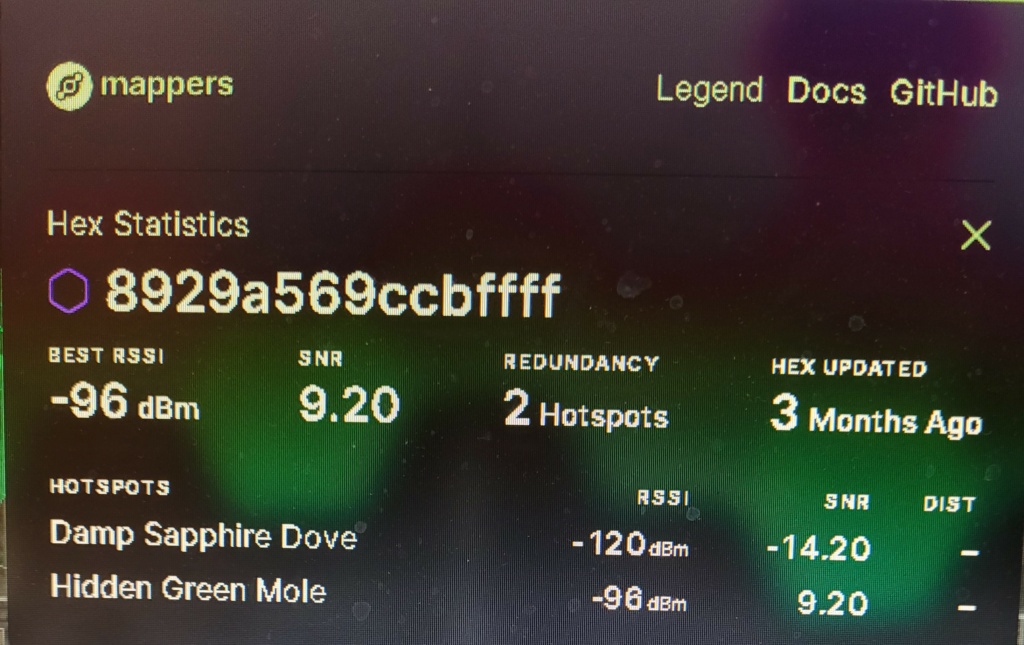
My 5G Small Cell Signal Strength: Hidden Green Mole -96dbm 9.2 SNR
If your outside signal ranges from:
| Signal Strength | General Results |
| -50 to -79 dBm | Considered great signal (4 to 5 bars) |
| -80 to -89 dBm | Considered good signal (3 to 4 bars) |
| -90 to -99 dBm | Considered average signal (2 to 3 bars) |
| -100 to -109 dBm | Considered poor signal (1 to 2 bars) |
| -110 to -120 dBm | Considered very poor signal (0 to 1 bar) |
I have plenty of room for improvement here.
Early in a network’s development, it is essential to reward builders for their efforts to provide initial deployments and test basic network operations at a meaningful scale. As such, HIP 51 and 53 proposed a Genesis period of Proof-of-Coverage (PoC) rewards on the MOBILE subDAO.
Over 6,500 small cells (at the time of this writing) have been deployed on the Helium 5G network and with this scale, some community members have correctly raised concerns about the quality of coverage on the network. The strength of the network is predicated on providing useful coverage for phones and other devices. A small cell’s rewards should be aligned with this ultimate goal of usefulness and differentiation from traditional mobile network deployments.
Over the course of the next 12 months, PoC rewards will evolve from allocating tokens for simply being online to identifying and rewarding useful coverage. Improving our identification of overly-dense deployments will also ensure that the network continues to grow in a healthy way and avoids early arbitrage of PoC rewards. As with all incentive based systems, this is an iterative process and the community should expect frequent updates.
These changes are being communicated well in advance to give current and future network builders the opportunity to optimize radio setups to help ensure they can yield rewards for delivering useful coverage.

Determining useful coverage and the impact on MOBILE PoC rewards will be based on a number of factors:
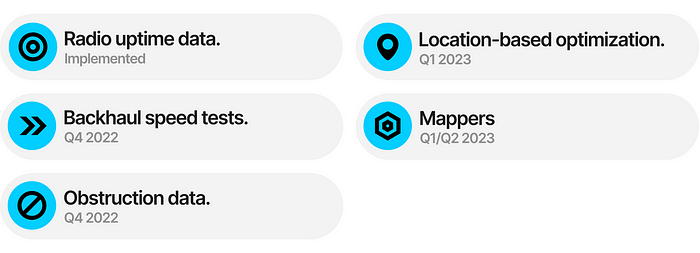
These factors will be rolled out in stages over the course of the next twelve months and explained in detail to ensure network builders can take concrete steps to plan or improve their setups.

Planned release: Implemented
Radio uptime data is a strong indicator for radio reliability, and as such is a key element of service-level agreements (SLA).
There are a variety of circumstances that can affect radios staying online, including power outages, extreme weather (for example, 300 radios were knocked offline during Hurricane Ian), and defective equipment.
Service providers need to understand the reliability of a particular radio before connecting a subscriber to that radio. Historical data of regular dropped connections, for example, could indicate that a radio would not meet the expected quality of service that a provider has guaranteed a subscriber.
During the Genesis period, rewards were issued based exclusively on data provided by the Spectrum Access System (SAS), and radios have not been penalized for intermittent outages.
Recently, along with heartbeat data, a preliminary algorithm was introduced that can track radio uptime.
As the network matures and competition among radio operators increases, if your radio uptime becomes significantly worse compared to peers, your rewards will decrease.
It is recommended that radio operators closely monitor their radio uptime data and take care to ensure that equipment remains online and in good operating condition.

Planned release: Q4 2022
In contrast to the IoT network, high throughput and low latency are crucial to the usefulness of a 5G network. As such, providing quality backhaul to 5G radios is key to the reliability of the network.
Recently, the Helium Explorer was updated to display statistics from backhaul speed testing. Initially this is just for informational purposes, but soon radios with acceptable speeds and latency will earn full rewards, and those with less reliable backhaul will receive fewer rewards.

Making sure your radio is connected to a low-latency, fast internet connection can help ensure your backhaul tests remain at an acceptable level to earn full rewards.

Planned release: Q4 2022
Obstructions indicate any objects or obstacles that might impede the path of a signal. The placement and direction of radios is critical, as CBRS signals do not travel well through walls or dense trees.
Quality of placement and radio direction means the difference between your signal traveling for several city blocks versus not traveling anywhere. In order to optimize for useful coverage, it is crucial that signal paths be clear and unimpeded as much as possible.
Here is what you need to know in order to optimize your radio’s location:
A properly functioning radio on the Helium 5G network continuously advertises its location, direction, beam width, and radiated power. This information, coupled with a number of geospatial data sources, can provide a 90% accurate estimate of realistic receive signal strength within the hexes (locations) surrounding your radio.
Take for example the data below for a 430H radio mounted on a small office roof in downtown Boulder:
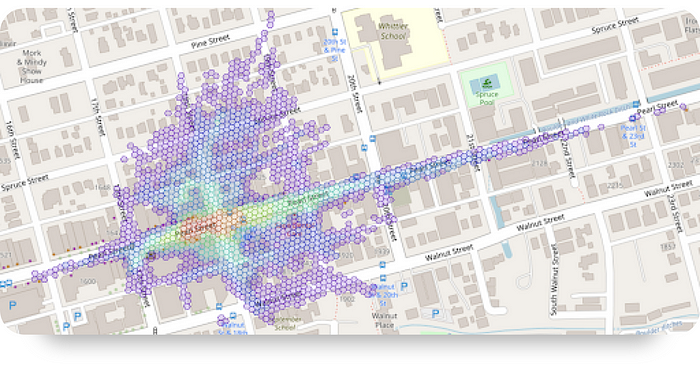
Over the course of the next three months, users will see this data populated in the Helium Explorer, indicating how many of the surrounding hexes to which a given radio is able to provide coverage.
After the initial informational roll out, rewards will become a function of the number of hexes covered and the corresponding signal quality in those hexes. It will also be scaled to take into account geographic areas with too much coverage.
This is an ideal time to optimize radio placement and direction to ensure rewards are not affected as these changes start to come online. It is also a good time to start placing radios where coverage does not overlap. Although some amount of redundancy will help a network’s reliability, 5G coverage is significantly different from the LoRaWAN deployments that many are used to in the Helium ecosystem. Since spectrum is shared, too many radios in overlapping segments will limit the usefulness of the network in that area.

Planned release: Q1 2023
Building the largest, most useful 5G network is a goal of the MOBILE subDAO, but not all locations are created equal. Although network builders are able to set up radios anywhere, it’s important that these radios are deployed in areas that will have real usage. This is where Service Providers, like Helium Mobile, can help guide the “shape” of the network as it deploys more widely over the coming months and years.
Although the logistics of this functionality are still in development and we believe that a governance change needs to be proposed to support this economic change, we believe that Service Providers should be able to influence where radios could be deployed by increasing rewards for particular geographic areas depending on where their customers are frequently using service. By boosting these areas, the demand side of the network (real subscribers) can meet the supply side of small cell deployers.

Planned release: Q1 2023
Between the Spectrum Access System (SAS) Oracle, heartbeat data, obstruction data, and location-based optimization, the network will have a significant dataset to accurately and equitably incentivize useful coverage.
However, we know firsthand there will always be some amount of arbitrage when there is an incentive-based reward system. To that end, there is a plan to develop Helium mappers to act as enforcers of data validation on the network.
Mappers will roam the physical world and share PoC data as evidenced by their internal modems. This allows us to validate or invalidate the data collected by Oracles and automatically adjust rewards for those who are spoofing the network by broadcasting falsified data.
There will be two ways users can map the network:
Spot mapper beta availability is expected before the end of 2022, with broad availability rolling out early 2023.
As we enter this next phase of building and scaling the network, it is crucial that we shift our focus towards providing reliable and useful coverage on the Helium 5G network. We look forward to building this network together with Small Cell Deployers, Mappers, Subscribers, Service Providers, and the Helium community at large.
Helium 5G MOBILE Genesis tokens continue to stack up. Today marked 100 days of MOBILE Genesis.
How long will Genesis last, and what value will be assigned to the tokens? We still have a lot to look forward to!
I had the same internet plan since first having the fiber service installed back in 2004. The 50Mbps speed was never an issue for browsing and common everyday ‘household’ use.
After installing the 5G CBRS Small Cell, the Helium network began providing speed test results, in an effort to develop coverage data etc. When the speed tests first began, small cell operators were notified that the results were not yet affecting rewards scale, but would, at some time in the future.
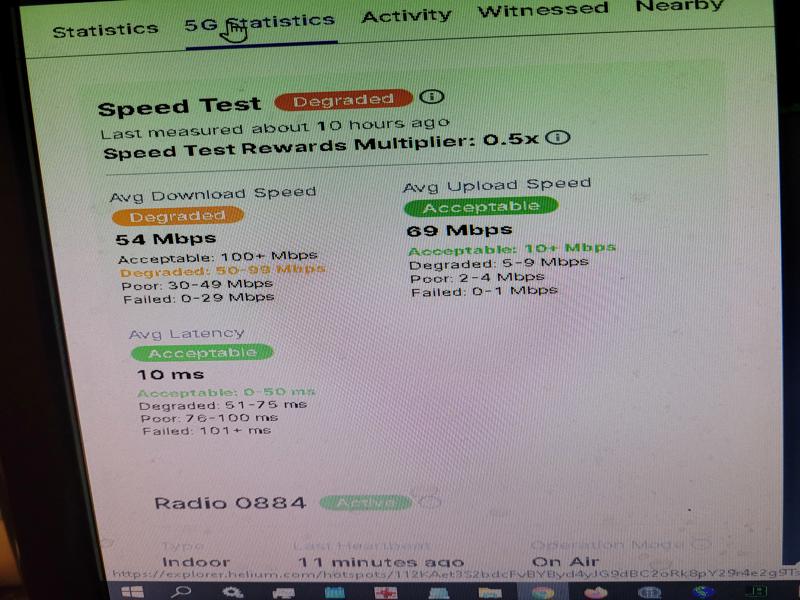
My speed tests were failing, as the minimum acceptable speed is 100Mbps, and (as you can see above) I barely had half that speed. I waited and watched, and without announcing any date for the reduction in rewards scaling to take effect, it took place, and I was caught short for a while. So, for about a week, I received only half as many MOBILE token rewards. Once I saw the degradation was in place, I ordered the 500/500Mbps and it took a week to install.
The full rewards scale was restored immediately as the 500Mbps service came online.
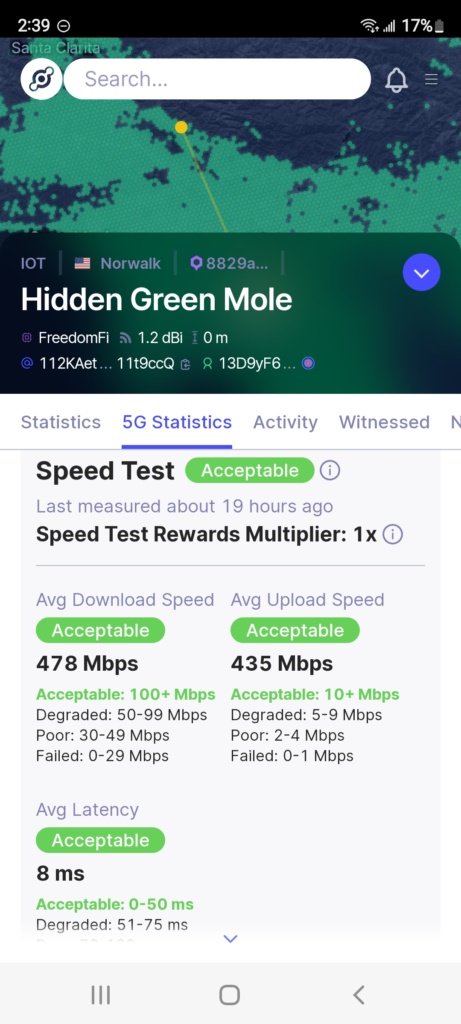
So here we are on day 100 of Helium 5G Genesis. No end in sight for the Genesis period at this point. I search for an end date everyday. Keep those tokens flowing!
The much anticipated RAK Wireless Helium Mapper Kit2 has finally arrived! Here’s a few photos of the assembly process and some information from the vendors website. Very cool stuff!
Helium Mappers is a community-driven project looking to provide information about the effective coverage for nodes (LoRaWAN end devices) within the Helium Network. The coverage map is available at mappers.helium.com. You will find gray hexes to indicate the regions where one or more hotspots are deployed, similar to the green ones in the Helium Explorer. Additionally, the green clickable hex regions within the Mappers tool show the information collected by the community Mappers about the coverage available in that region.
A Helium Mapper is a LoRa node equipped with GPS, which sends location information as LoRaWAN messages. When at least one Helium hotspot receives the packets, the Helium Console forwards some data such as the Received Signal Strength Indicator (RSSI) and the signal-to-noise ratio (SNR) to the Mappers API. The RSSI is a measure of the power present in the received signal, a higher value (less negative), the stronger it is considered. For the SNR a higher ratio represents a clear signal whereas a negative number represents a noisy signal. Then, the Mappers backend performs some checks, such as filtering valid messages according to the hotspots locations and colors a new green hexagon or updates the existing ones with the latest information.
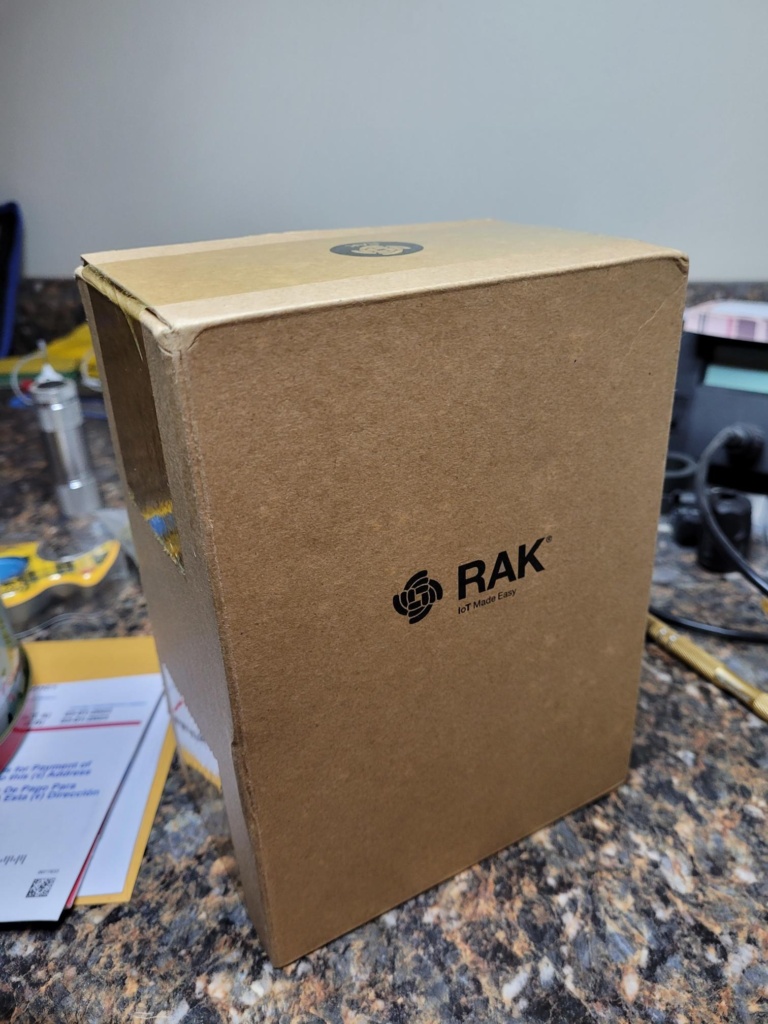
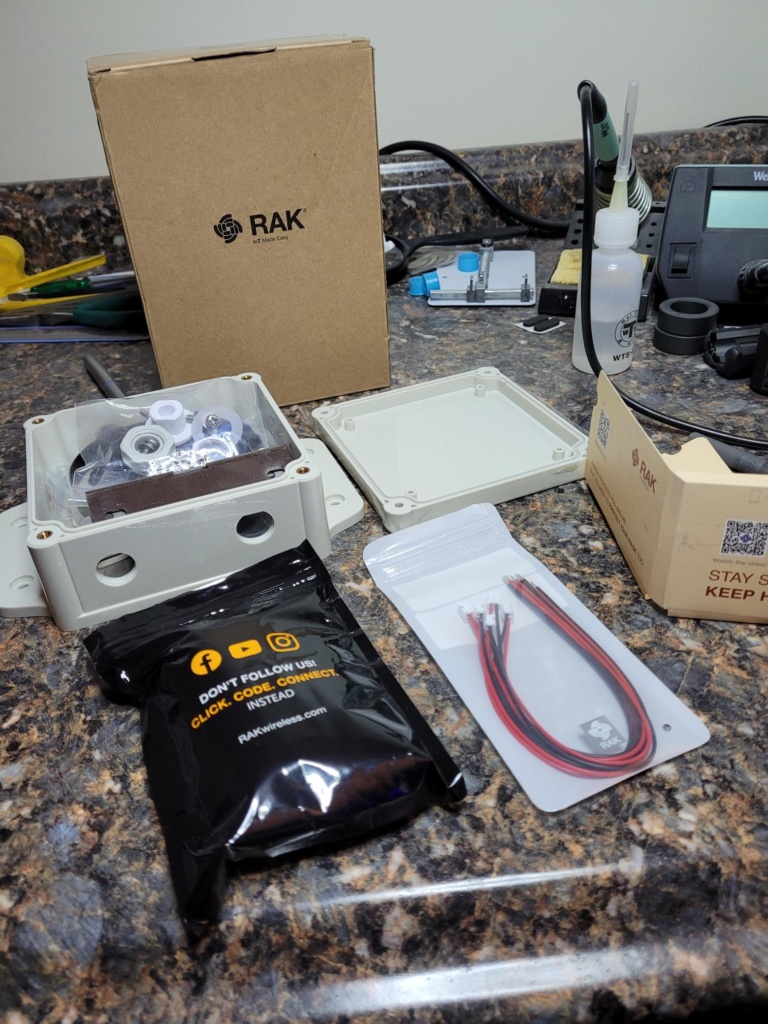
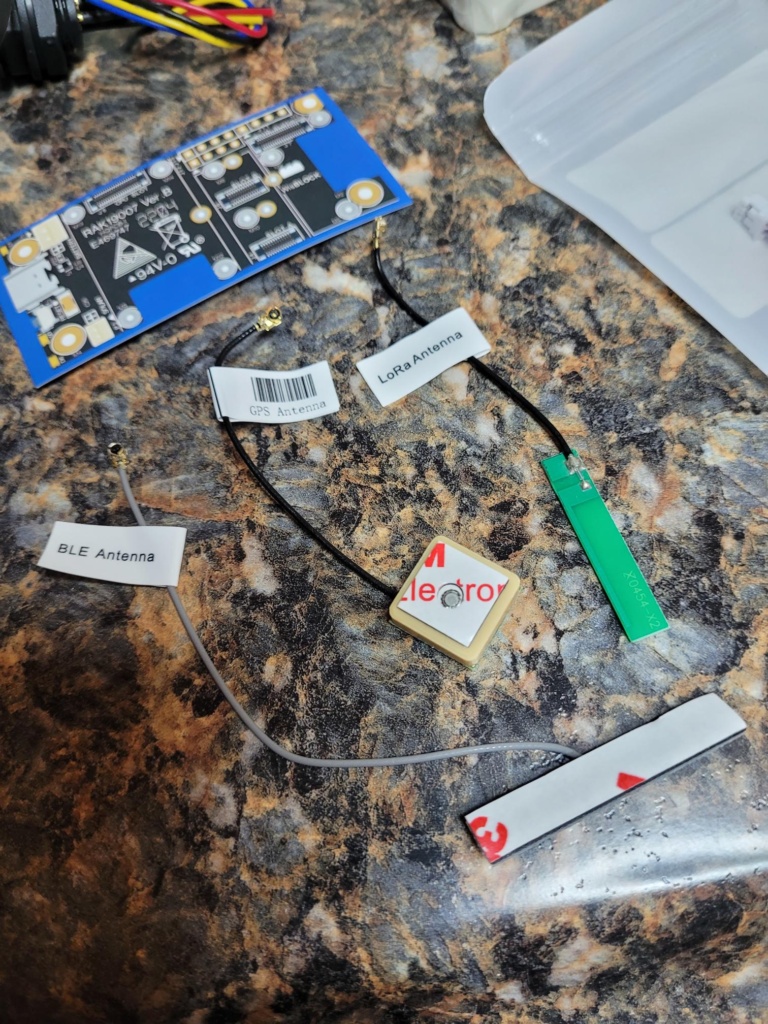
The BLE (Bluetooth Low Energy) and LoRa (Long Range) antennas will be affixed to the insides of the case, with the GPS antenna on the top cover facing the sky.
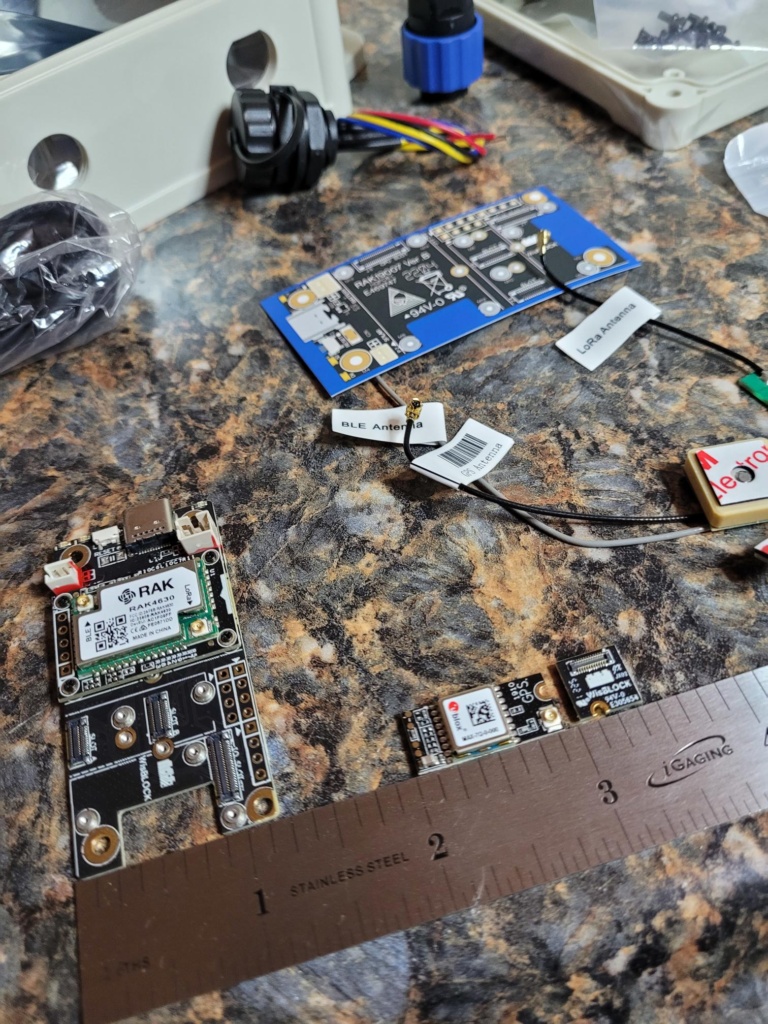
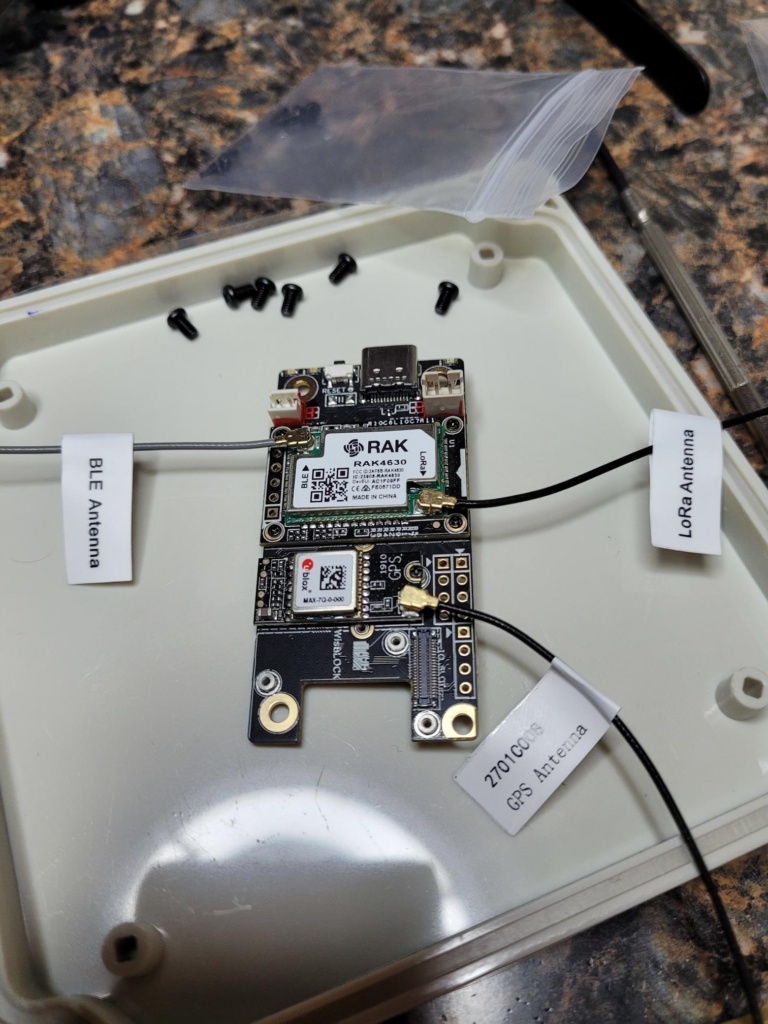
Talk about tiny screws! The (non-metallic) screws for securing the modules to the mainboard were so tiny, I had to use precision tweezers to line up the screws.
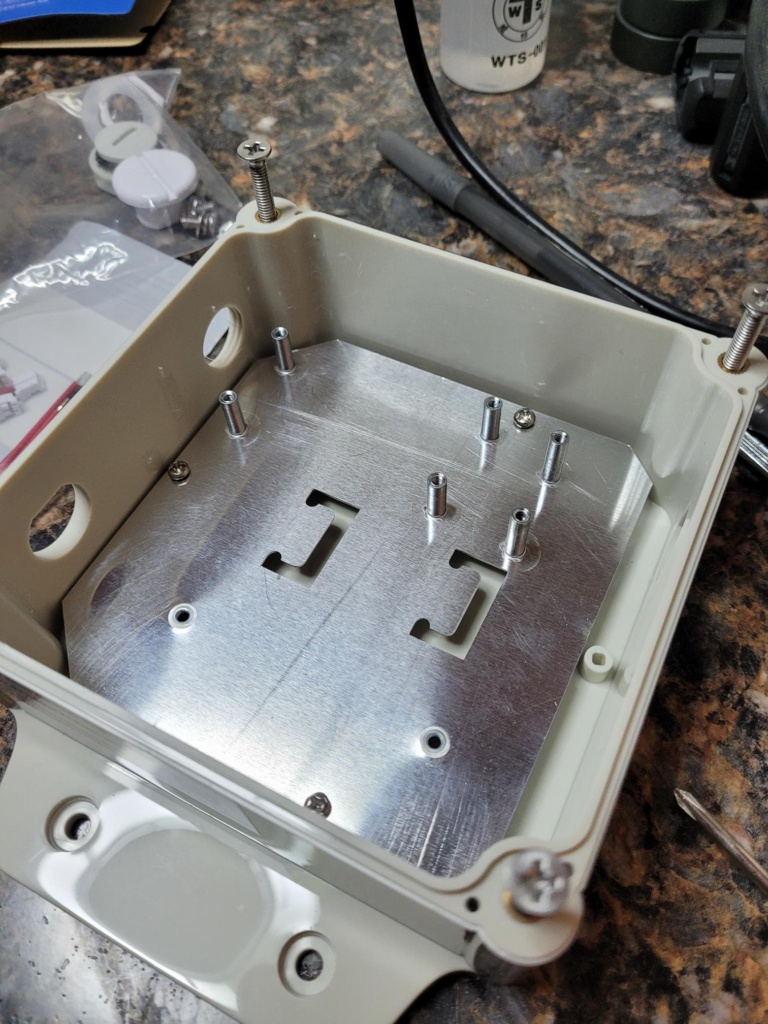
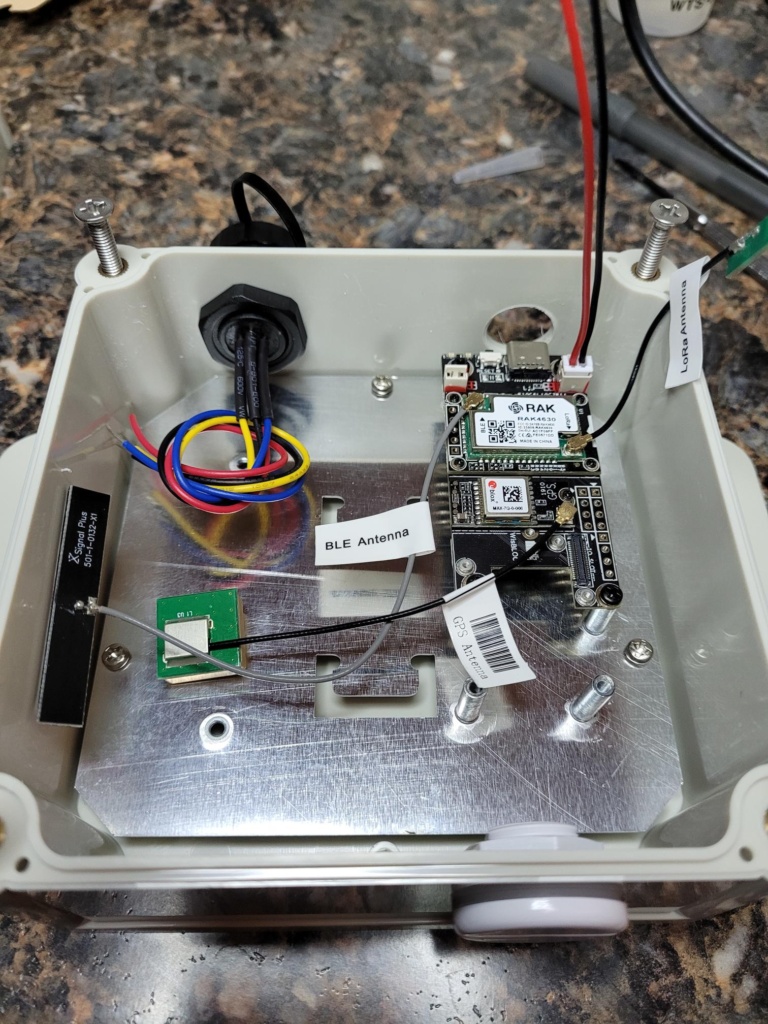
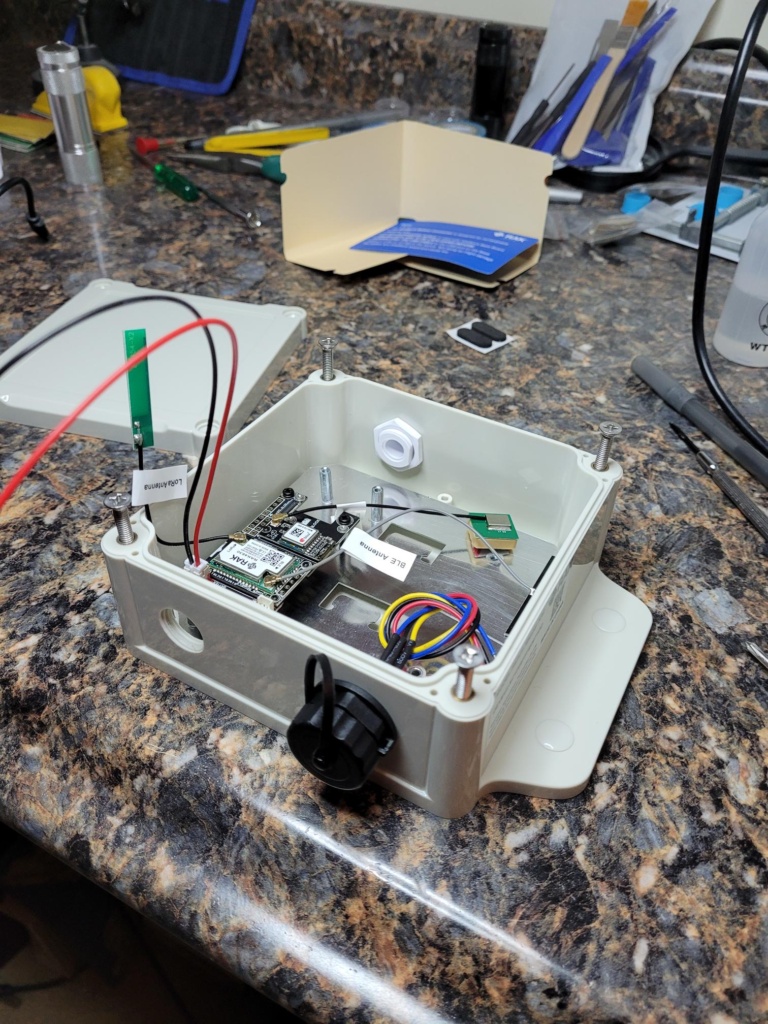
At this point I’m just waiting for the battery to arrive before attaching the antennas and closing up the case. I plan to set this unit on the dashboard and let it map the Helium Network as I go about my business.
I now have the Helium Mapper “installed” in my car. My first idea of mounting it on the dashboard, proved to be somewhat impractical. Instead I placed it in the rear window, secured between the headrests by the seatbelt. Works great from this position. I have already mapped hundreds of Helium devices around the SoCal area.
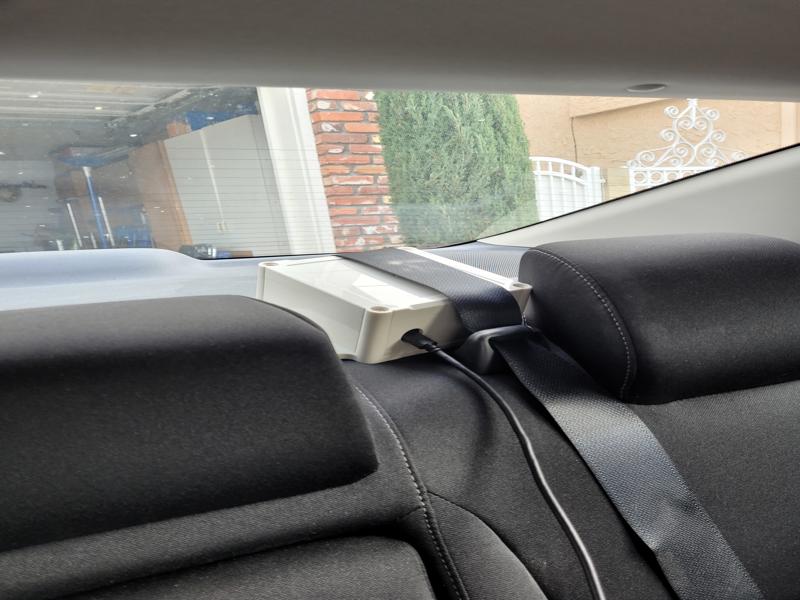
Helium has announced the 5G genesis period (aka #cellularsummer) will end in January 2023. I’m hoping to reach 2MM in accumulated tokens before the Genesis period comes to a close. Stacking 5G $MOBILE helium.com
The Helium network has announced that the Helium 5G $MOBILE Genesis period will end in January 2023. Rewards paid for simply having a 5G radio ‘on the air’ will cease. The outline for 5G “Proof of Coverage” rewards has been introduced in the latest Helium Improvement Proposal (aka HIP 74) . This means I need to have a signal that neighboring 5G radios can hear.
A weatherproof enclosure will be required to mount the radio outdoors. It may be possible to earn higher rewards outdoors. A clear view of the horizon, or an unobstructed view of my target area will do the trick. I hope to realize significant improvement versus my current indoor location (facing out my second story window)
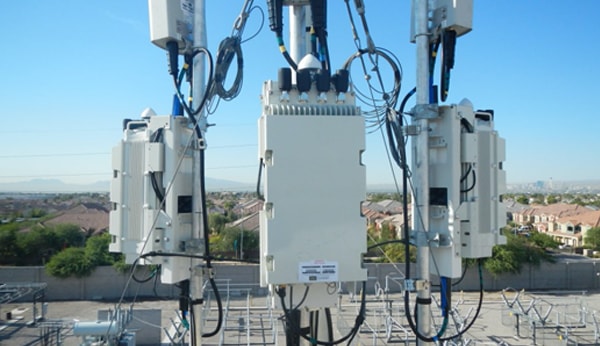
Before I purchase anymore 5G radio hardware, some comparisons need to be be made once the radio is outdoors.
I’ll point the radio to leverage the highest ‘user density’ area. The HIP 74 announcement addressed this issue in the form of a new console. that will assist in pointing radios in the ‘best’ direction. As more 5G radios come online, and Helium Mappers (like myself) provide real coverage data, these new consoles will reflect validated coverage data.
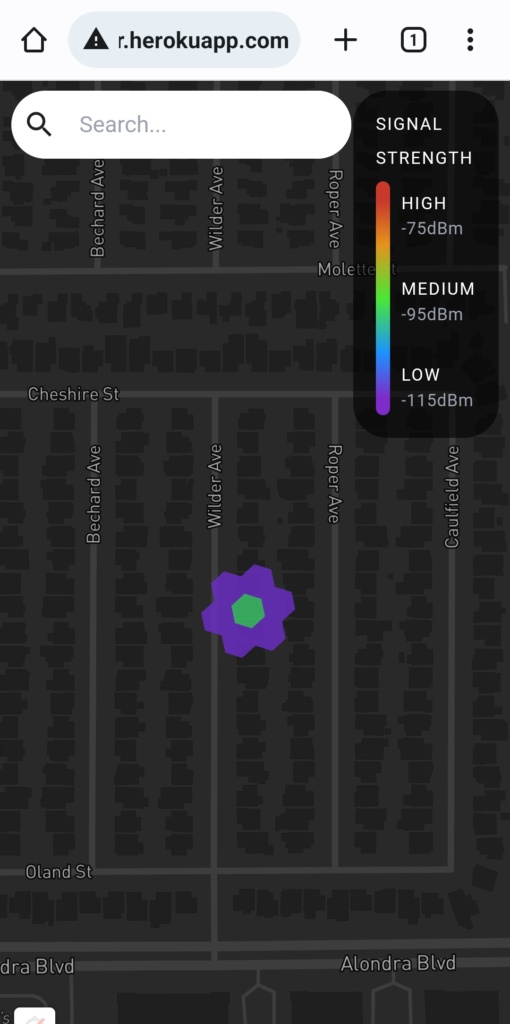
This barebones Modeled Coverage Map shows radio performance based on the Modeled Coverage Data. The first version shows how many hexes the Radio covers, at which signal levels, and what are other competing Radios in that hex. With the passing of this HIP, more features will be added to evolve this map into a full-scale Coverage Explorer.
HIP-74 lays the groundwork to start rewarding Helium Mobile Hotspot operators based on actual coverage provided vs. mere existence. Specifically:
We expect this to be the first in a series of HIPs that will incorporate other data sources, such as zoning and population density, feedback from carrier members of the MOBILE DAO, network users and mappers, etc. Our aim is to make future HIPs smaller and more easily consumable.
This HIP affects only the Helium 5G network and has no impact on IoT rewards.
Once implemented, Modeled Coverage will be a significant milestone in introducing the Proof-of-Coverage concept in the Mobile Network. The blog post MOBILE Proof-of-Coverage: The Road Ahead provides a detailed MOBILE PoC Roadmap. Combined with other parameters like uptime and backhaul, Obstruction Data allows for more fair rewards and incentivizes high-quality deployments of Radios.
I have just received MOBILE rewards totaling 9,232.01 for February 1, 2023. I am not that surprised. I haven’t heard anything new about the funding whatsoever.
Current $MOBILE Token Stack: 2,181,733.83